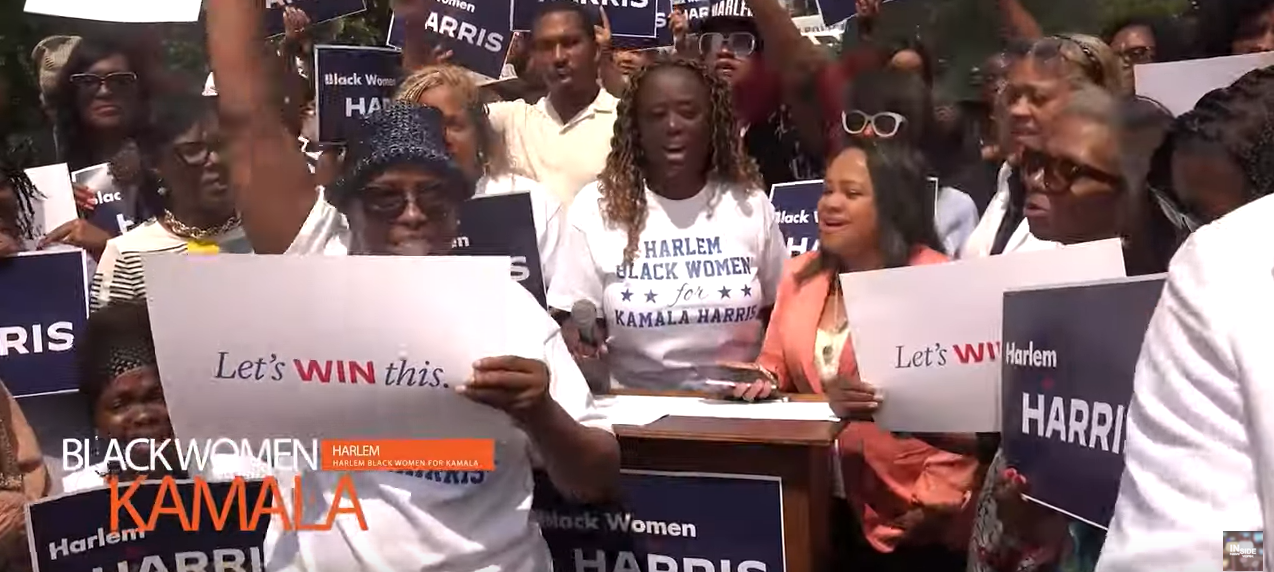Photos: Brookings Institute\YouTube
The following unemployment report was done by Black economist Kyle K. Moore of The Economic Policy Institute.
EPI analyzes state unemployment rates by race and ethnicity, and racial/ethnic unemployment rate gaps, on a quarterly basis to generate a sample size large enough to create reliable estimates of unemployment rates by race and ethnicity at the state level. We report estimates only for states for which the sample size of these subgroups is large enough to create an accurate estimate. For this reason, the number of states included in our maps and data tables varies based on the analysis performed. The following analysis contains data on the final two quarters of 2020.
Our analysis of third- and fourth-quarter 2020 data finds slow and differing recovery paths across racial/ethnic groups. While the Hispanic–white ratio remained relatively stable at around 1.6 across both periods, the Black–white ratio continued its rise back toward its historical 2-to-1 trend. That is, while unemployment rates fell for all groups over the third and fourth quarters, Hispanic unemployment remained 60% higher than white unemployment, while Black unemployment rose from 60% higher to 90% higher.
Third-quarter state unemployment rates, trends, and ratios
In the third quarter of 2020, during a summer rocked by anti–police brutality protests and amid an ongoing public health and economic crisis, unemployment rates remained above 10% for all racial/ethnic groups except white Americans. That said, there were marked improvements in unemployment rates compared with the second quarter, now recognized as the unemployment peak for this pandemic-induced recession.
Trends among white workers
In the third quarter of 2020, the white unemployment rate was 7.3%, still up 4.2 percentage points relative to what we now recognize was the peak of the previous economic recovery in March 2020. Unemployment remained at or above 10% in six states for white workers, with those in Hawaii facing the highest rates, at 13.9%, likely due to the significant blow the pandemic dealt to the tourism and hospitality industries. White unemployment in Hawaii remained up 10.8 percentage points from March 2020. The remaining five states where unemployment remained at or above 10% for white workers were California, Massachusetts, Nevada, New York, and Rhode Island.
Consistent with historical trends, the white unemployment rate was lowest in the District of Columbia, with a rate of 3.5%. White workers in the District make up a disproportionate share of its federal government workforce, and federal employment in D.C. accounts for nearly a fifth (18%) of D.C. employment overall. The federal government is one of the few industries whose employment increased throughout the pandemic.
Though their unemployment rate did rise (from 2.0% in the first quarter), white workers in our nation’s capital were largely shielded from the worst employment effects of the pandemic recession, demonstrating the efficacy of federal employment for dampening negative economic shocks. However, the fact that this insulation is so skewed toward white workers underlines the extreme inequality inherent in D.C.’s labor market.
Trends among Black workers
While a multiracial coalition of activists took to the streets to protest racial inequality throughout America’s criminal justice, political, and economic systems, Black workers continued to face a disproportionate share of the pandemic’s economic and public health burden, with an unemployment rate 5.6 percentage points greater than the pre-pandemic economic peak.
Black workers faced unemployment rates of over 10% in 16 of the 22 states (including the District of Columbia) for which unemployment data for Black workers was available. Unemployment rates were highest for Black workers in Pennsylvania (19.5%), Michigan (17.9%), Illinois (15.7%) and the District of Columbia (15.6%). Black workers were more than twice as likely to be unemployed as white workers in the District of Columbia and four states: Alabama, Michigan, Pennsylvania, and Texas.
The case of the District deserves special mention. The Black–white unemployment ratio was 4.5 in 2020Q3—that is, Black workers were 4.5 times as likely to be unemployed in our nation’s capital as white workers. D.C. has long outstripped the rest of the country in its Black–white unemployment ratio, which has spiked as high as 8.5 in recent years3—reflecting extreme inequality and marked occupational segregation in the District. That occupational segregation brought harsh pandemic outcomes for Black workers in D.C., who are disproportionately employed in occupations without access to the telework options that protected white workers from both the economic and the health shocks of the pandemic.5
Among states with available data, the unemployment rate for Black workers was lowest in Georgia, with a rate of 8.0%. The Black–white unemployment ratio in Georgia matched the national average at 1.6. North Carolina saw the lowest Black–white unemployment ratio in 2020Q3, with Black workers there 30% more likely to be unemployed than their white counterparts. In no state was the unemployment ratio less than or equal to 1 in 2020Q3—that is, there were no states where Black and white workers were equally likely to be unemployed, nor were there states where Black workers were less likely to be unemployed than white workers.
Trends among Hispanic workers
The overall unemployment rate for Hispanic workers was high compared with white workers’ yet fell below that of Black workers’ to 11.3% in 2020Q3, still 6.5 percentage points above the pre-pandemic economic peak. Hispanic workers faced unemployment greater than 10% in eight out of the 18 states with available data. Hispanic workers in Massachusetts faced the highest unemployment rate of all groups measured, at 21.4%, followed relatively closely behind by Hispanic workers in New York who faced a 19.1% unemployment rate, and Hispanic Nevadans at 16.4%.
These high unemployment rates among Hispanic workers reflect the impact of the pandemic recession on occupations and industries in which Hispanic workers are concentrated, with Latina workers in particular being less likely to be able to work from home.
Hispanic workers in Utah saw the lowest unemployment rates in our data at 4.7%, followed by Hispanic Georgians at 7.8%. In Utah, the Hispanic–white unemployment ratio was just 1.1, meaning Hispanic workers were only 10% more likely to be unemployed there. In Oregon, the unemployment ratio was exactly 1—Hispanic and white workers were equally likely to be unemployed, though that unemployment rate was a relatively high at 9%.
Trends among Asian American/Pacific Islander (AAPI) workers
AAPI workers have seen uncharacteristically high unemployment rates throughout the pandemic recession as well, with their overall rate still just above 10% in 2020Q3. This represents a reversal of recent trends in which AAPI unemployment rates fell below those of white workers. AAPI unemployment in 2020Q3 still represented the highest percentage point change from the previous economic peak in 2020Q1, at 7.1 percentage points higher. AAPI workers saw unemployment rates above 10% in four of the eight states for which there was available unemployment data, with the highest rates in New York (15.8%), and Hawaii (14.7%). Washington state saw the lowest AAPI unemployment rate among the available states, at 6.1%. This rate was also below that of white workers in that state, whose unemployment rate was 8.3%.
Fourth-quarter state unemployment rates, trends, and ratios
The end of the year was marked by hugely important elections for the presidency and in the senate, as COVID-19 continued to spread across the country. Over the three-month period from October 2020 to December 2020, the confirmed U.S. death count from COVID-19 rose from around 200,000 to roughly 350,000; in the previous period, it had risen from around 130,000 to 200,000. Despite the devastating public health effects of the pandemic, the labor market continued to improve for many workers, though at differing rates. Unemployment rates in 2020Q4 fell below 10% for all groups except Black workers.
Trends among white workers
The overall white unemployment rate in 2020Q4 fell to 5.4%, just 2.3 percentage points above the rate in 2020Q1 prior to the pandemic. Hawaii was the only state in which the unemployment rates for white workers remained above 10%, likely due to that state’s reliance on the still severely limited tourism and hospitality industries.
The white unemployment rate was below 4% in 11 states and the District of Columbia in 2020Q4. Rates were lowest in Iowa (2.9%), Nebraska (2.6%), and South Dakota (2.5%). There were also 13 states in which the unemployment rate for white workers in 2020Q4 was within 1 percentage point of its pre-pandemic low. Despite the clear labor market improvements in some states, unemployment rates for white workers remained at or above 5% in nearly half the states. This, along with the much higher unemployment rates for members of other groups, underlines the sharply unequal “K-shaped” nature of this recovery.
Trends among Black workers
In sharp contrast to the relative labor improvements seen for white workers in 2020Q4, Black workers saw continued recession-level unemployment across the states for which we have data. Black workers were the only racial/ethnic group whose national unemployment rate remained above 10%, at 10.2%. Twelve out of the 21 states (including the District of Columbia) for which data were available had Black unemployment rates above 10% with the highest rates seen in Pennsylvania (16.5%), Michigan (15.6%), New Jersey (15.4%), and the District of Columbia (14.7%).
The Black–white unemployment ratio remained highest in the District, with Black workers in our nation’s capital four times as likely to be unemployed as their white counterparts.The Black–white unemployment ratio at the national level rose to 1.9. This represents an unfortunate return to form for the American economy, in which Black workers have been consistently about twice as likely as white workers to be unemployed over the past 50 years.
The pandemic recession represented a rare disruption of this trend where the ratio fell to 1.6 in the second and third quarters. At the onset of the pandemic, unemployment rates rose for all groups of workers, and at similar levels because the labor market disruption was being driven by justified economic lockdowns to contain the spread of the coronavirus. As both the recession and the pandemic continued, the labor market recovered much more slowly for Black workers—confirming Black workers’ status as “last hired” during economic recoveries. Black workers were at least twice as likely to be unemployed as white workers in 11 states and the District of Columbia in 2020Q4.
Trends among Hispanic workers
The unemployment rate for Hispanic workers fell to 8.7% in 2020Q4, representing a significant improvement from the previous period. Hispanic workers still saw unemployment rates above 10% in five states: California (10.0%), Massachusetts (10.8%), Nevada (10.9%), New York (12.4%), and Pennsylvania (12.9%). While these remain extreme, they represent marked improvements from the previous period; for example, Hispanic unemployment rates in Massachusetts were cut nearly in half and by roughly a third in New York. Hispanic workers were more than twice as likely to be unemployed as white workers in Virginia, Oklahoma, and Pennsylvania.
Among the states with available data, unemployment rates for Hispanic workers were lowest in Georgia (3.9%), Utah (4.5%), and Kansas (4.6%). In Georgia, Hispanic workers were less likely to be unemployed than white workers; the Hispanic–white unemployment ratio was less than 1, at 0.9. Kansas, New Jersey, and Washington had similarly low Hispanic–white unemployment ratios, at 1.0, 1.1, and 1.1, respectively.
Trends among Asian American/Pacific Islander (AAPI) workers
AAPI workers saw their unemployment rates continue to fall in 2020Q4, though those rates remained above those of white workers in many instances. Overall, the unemployment rate for AAPI workers was 7.6%, still 4.6 percentage points above their position prior to the pandemic. AAPI workers faced unemployment rates greater than 10% in just two of the states for which data was available, Hawaii and New York. AAPI workers saw unemployment rates lower than white workers in three states: New Jersey (5.9% vs. 7.6%), Illinois (5.1% vs. 6.0%), and Washington (4.7% vs. 6.0%).
Methodology
The unemployment rate estimates in this report are based on the Local Area Unemployment Statistics (LAUS) and the Current Population Survey (CPS) from the Bureau of Labor Statistics. The overall state unemployment rate is taken directly from the LAUS. CPS six-month ratios are applied to LAUS data to calculate the rates by race and ethnicity. For each state subgroup, we calculate the unemployment rate using the past six months of CPS data. We then find the ratio of this subgroup rate to the state unemployment rate using the same period of CPS data. This gives us an estimate of how the subgroup compares with the state overall.
While this methodology allows us to calculate unemployment-rate estimates at the state level by race and ethnicity by quarter, it is less precise at the national level than simply using the CPS. Thus, the national-level estimates may differ from direct CPS estimates. In many states, the sample sizes of particular subgroups are not large enough to create accurate estimates of their unemployment rates. We report data only for groups that had, on average, a sample size of at least 700 in the labor force for each six-month period.










